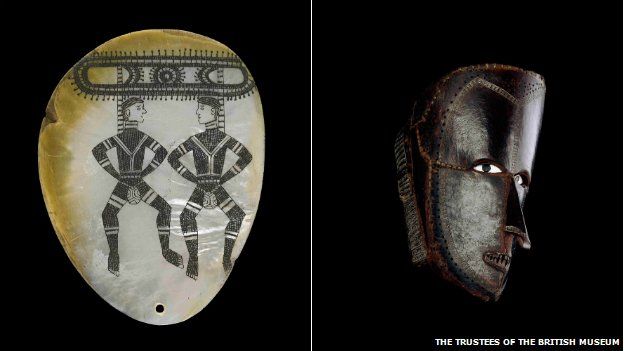Historic indigenous objects return to Australia
- Published

A collection of rare objects, including a shield thought to have been picked up by Captain Cook in 1770, are set to return to Australia for the first time.
The exhibition is part of a new deal signed between the National Museum of Australia and the British Museum.
It will feature 151 indigenous objects, most of which have not been seen in Australia since they were collected.
National Museum director Mathew Trinca said the exhibition will "encourage Australians to consider their history".
'Remarkable treasures'
"This is an important exhibition for our nation. It includes objects from the very earliest contacts between indigenous and non-indigenous people in this country right to the present day," Mr Trinca told the Canberra Times.
He said displaying the "remarkable treasures" was the culmination of "an extraordinary process of consultation with 25 Aboriginal and Torres Strait Islander communities across Australia over several years".
Peter Yu, chair of the National Museum Indigenous Advisory Committee, said: "Addressing these sometimes confronting issues and exploring the complex history of early encounters... is a crucial component of reconciliation."
The Encounters exhibition will open in November. It will be followed in 2016 by the British Museum's acclaimed A History of the World in 100 Objects and the third exhibition of the series will come to Canberra in 2018.
Arts Minister George Brandis welcomed the "significant" partnership, saying it will give Australians "a remarkable opportunity to view objects from the world's oldest national public museum".
"It will also encourage cultural exchange and provide a platform to showcase our rich Australian heritage to audiences overseas," he added.
The iconic Yumari canvas by renowned Papunya artist Uta Uta Tjangala is one of the National Museum objects being sent to the British Museum to be part of a sister exhibition.
Indigenous Australia: enduring civilisation, which opens in London in April, is the first in the UK devoted to the history and culture of both Aboriginal peoples and Torres Strait Islanders.
- Published26 January 2015
- Published15 September 2014